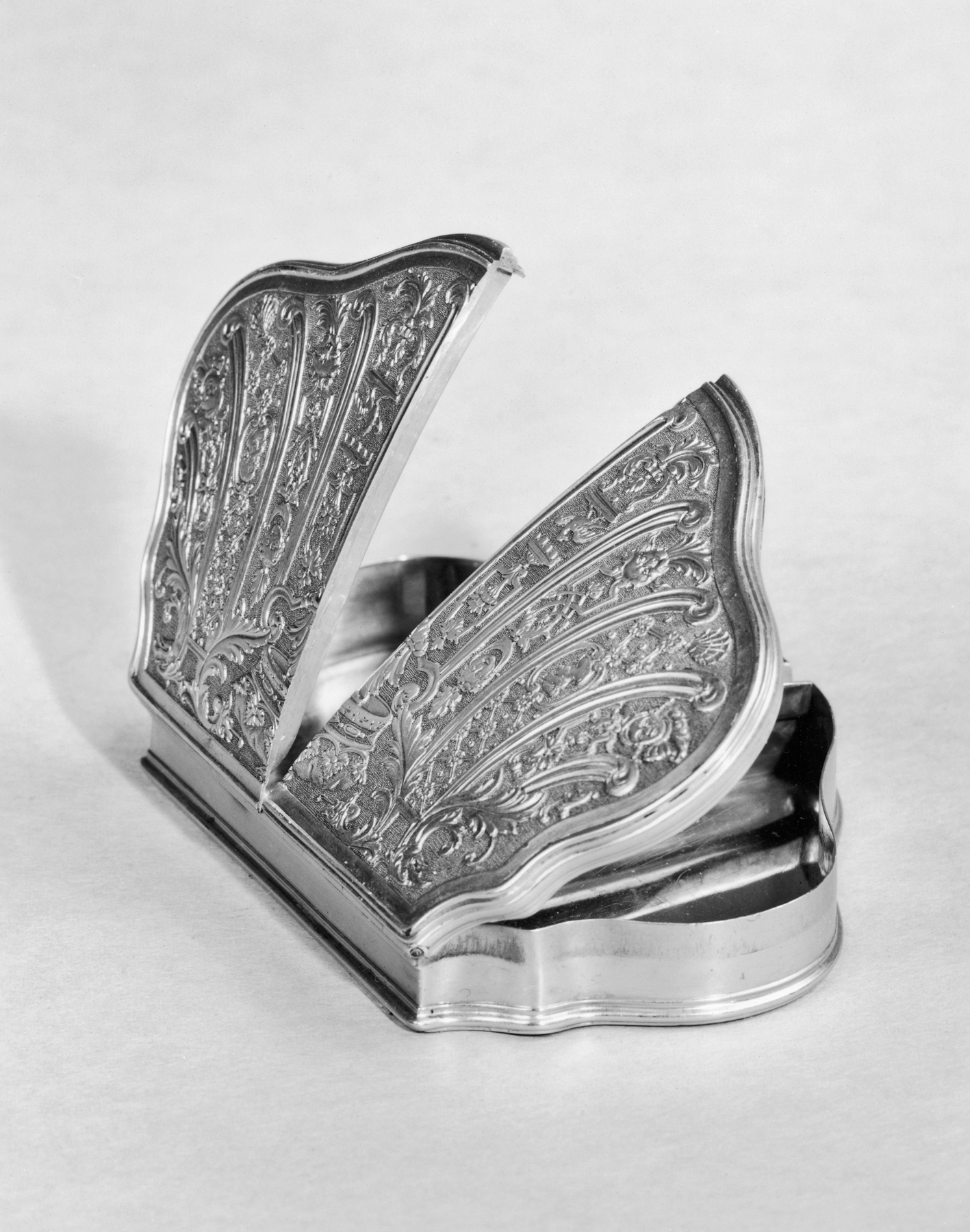Double Snuffbox with the Coat of Arms of James, first Duke of Chandos
Originating in the Americas, the practice of “taking snuff,” or inhaling pulverized tobacco through the nose, became a common European custom by the 17th century. Consumers of all social levels and of both sexes would carry small, airtight boxes filled with the powdered tobacco, taking a pinch whenever they needed. Over time, however, society’s elites began to purchase and commission increasingly extravagant and precious boxes. Kings and Queens would often present snuffboxes to ambassadors as diplomatic gifts and to courtiers as payment for services. Made of a variety of precious materials, including gold, enamel, semiprecious stones, lacquer, and tortoiseshell, snuffboxes were coveted and enthusiastically collected. Displaying one’s collection of prized snuffboxes or stylishly retrieving an elegant box from one’s pocket were important social rituals; these objects revealed a person’s tastes, interests, and erudition. This double snuffbox of chiselled gold is in the form of a stylised scallop shell. The base is engraved with an elaborate heraldic achievement, a shield-of-arms belonging to James, first Duke of Chandos (1673-1744).
Inscription
Provenance
Provenance (from the French provenir, 'to come from/forth') is the chronology of the ownership, custody, or location of a historical object. Learn more about provenance at the Walters.
James Brydges, 9th Baron Chandos, 1st Earl of Carnarvon, 1st Duke of Chandos (1674-1744), England, by commission; Henry Brydges, 2nd Duke of Chandos (1708-1771), England, by inheritance; James Brydges, 3rd Duke of Chandos (1731-1789), England, by inheritance; Richard Temple-Nugent-Brydges-Chandos-Grenville, 1st Duke of Buckingham and Chandos, 5th Viscount Cobham (1776-1839), England, by inheritance; Richard Plantagenet Temple-Nugent-Brydges-Chandos-Grenville, 2nd Duke of Buckingham and Chandos, 6th Viscount Cobham (1797-1861), England, by inheritance; Richard Plantagenet Campbell Temple-Nugent-Brydges-Chandos-Grenville, 3rd Duke of Buckingham and Chandos, 7th Viscount Cobham (1823-1889), England, by inheritance; Mary Temple-Gore-Langton, Baroness Kinloss (1852-1944), Stowe, England, by inheritance; Sale, Christie's, London, June 2, 1905, no. 40; Harding; Paris; Henry Walters, Baltimore, 1914, by purchase; Walters Art Museum, 1931, by bequest.
Exhibitions
| 1984 | Objects of Vertu: Precious Works of the Eighteenth Century. The Walters Art Gallery, Baltimore. |
Conservation
| Date | Description | Narrative |
|---|---|---|
| 7/22/2004 | Treatment | cleaned |
Geographies
United Kingdom, England (Place of Origin)
Measurements
H: 2 5/8 × W: 3 5/8 × D: 9/16 in. (6.7 × 9.2 × 1.5 cm)
Credit Line
Acquired by Henry Walters, 1914
Location in Museum
Not on view
Accession Number
In libraries, galleries, museums, and archives, an accession number is a unique identifier assigned to each object in the collection.
In libraries, galleries, museums, and archives, an accession number is a unique identifier assigned to each object in the collection.
57.102


